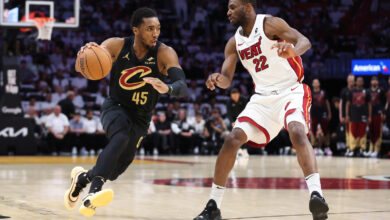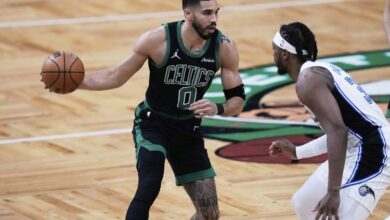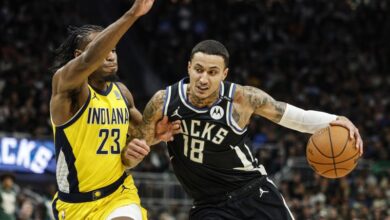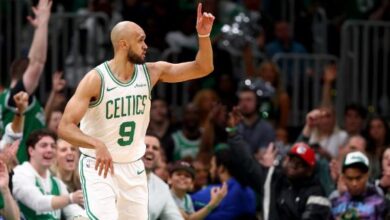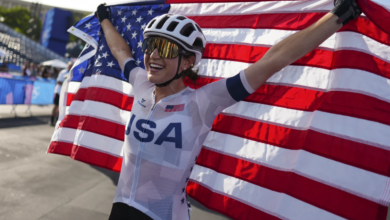Timberwolves Even Series in Commanding Fashion, Roll Past Curry-Less Warriors 117–93
Timberwolves Even Series as Warriors Struggle Without Steph Curry
Western Conference Semifinals Game 2 Recap
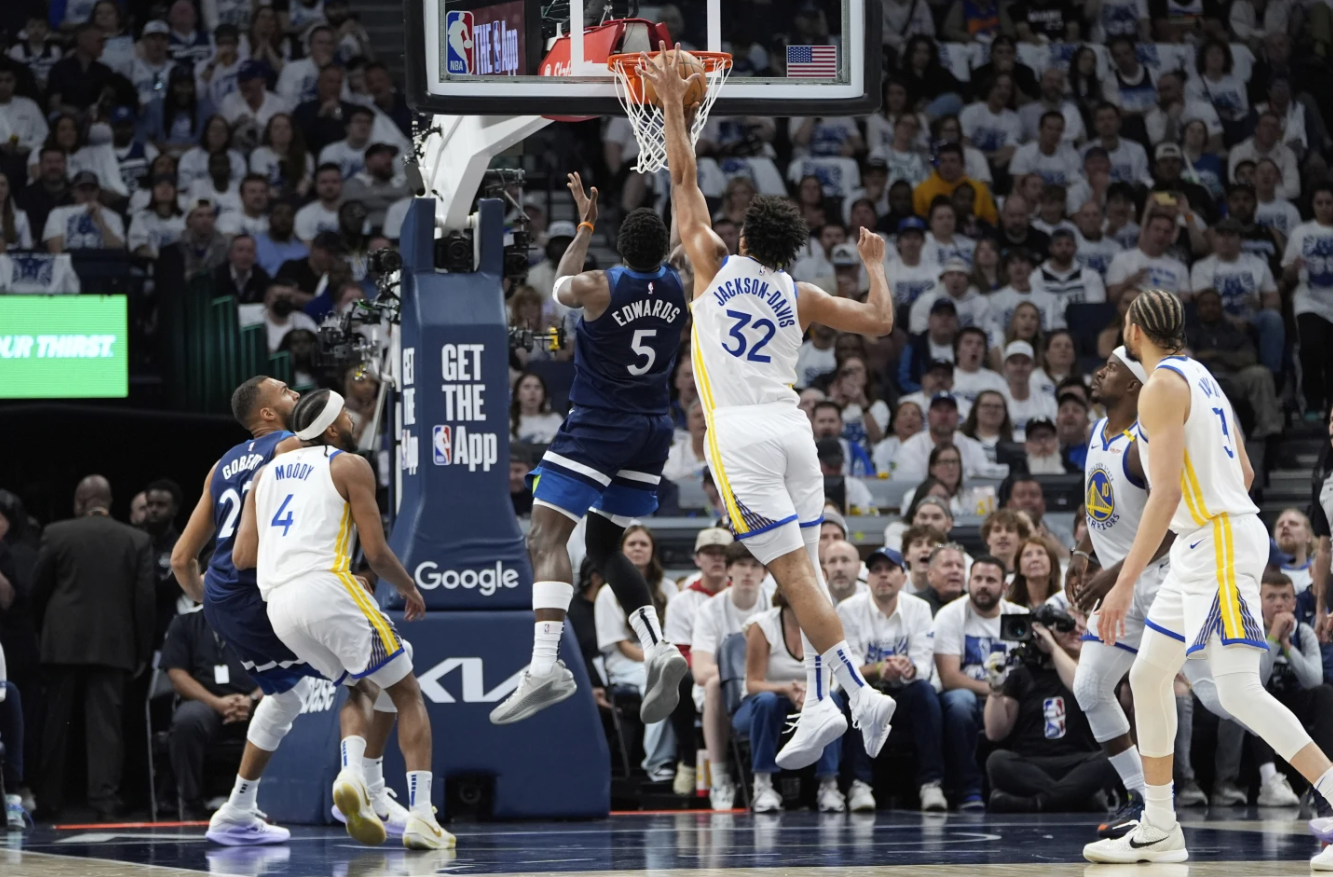
MINNEAPOLIS (WE) —The Minnesota Timberwolves leveled their Western Conference semifinal series against the Golden State Warriors with a commanding 117–93 victory in Game 2 at the Target Center on Thursday night. Facing the daunting task of contending without two-time MVP Stephen Curry — sidelined by a Grade 1 hamstring strain — the Warriors’ offense sputtered, allowing Minnesota to seize home-court advantage and inject newfound life into the series.
Series Context: Stakes and Storylines
Heading into the 2025 postseason, the Timberwolves (52–30) and Warriors (51–31) entered the Western Conference semifinals with contrasting narratives. Minnesota, led by perennial All-Star Anthony Edwards, sought to break through the second round for the first time in franchise history. Golden State, perennial contenders and four-time champions under head coach Steve Kerr, aimed to reach their sixth conference finals in seven years.
Game 1 on Tuesday showcased the Warriors’ depth, as reserve guard Jonathan Kuminga exploded for 23 points in a 99–88 win that masked underlying vulnerabilities. Yet the silver lining in Oakland quickly darkened: Curry exited with a hamstring injury late in the contest, an ominous development confirmed by an MRI on Wednesday revealing a mild strain that would sideline the two-time champion for at least Games 2, 3 and 4, with re-evaluation scheduled for May 15.
Without their floor general and all-time leading three-point threat, the Warriors struggled to generate consistent offense and defensive cohesion. Conversely, Minnesota seized its opportunity, leveraging its athleticism, bench firepower and balanced attack to dominate Game 2. The win not only tied the series 1–1 but also underscored the Timberwolves’ emergence as title contenders.
First Half: Minnesota Sets the Tone
First Quarter: Early Minnesota Surge
Minnesota wasted no time establishing control. Fueled by a blistering perimeter shooting display, the Timberwolves sprinted to a 16–4 lead. Stretching the floor with Jaden McDaniels and Nickeil Alexander-Walker knocking down triples, Minnesota scored 36 points in the opening 12 minutes. Golden State relied on Jonathan Kuminga’s aggressive drives, but the 18-year-old rookie missed several early looks, and the absence of Curry’s gravity was glaring.
Second Quarter: Warriors Stumble, Edwards Exits
The second quarter saw Minnesota tighten its grip. Julius Randle, acquired midseason in a blockbuster trade with the New York Knicks, asserted himself both in the paint and as a playmaker, tallying 12 first-half points and eight assists. Anthony Edwards, who had contributed seven points and four rebounds, suffered an ankle sprain with 5:56 remaining and limped off to the locker room.
Warriors head coach Steve Kerr elected to keep his starters in, but they struggled to generate offense. Without Curry’s floor spacing, Klay Thompson and Andrew Wiggins found their looks contested, and Golden State managed just 39 points in the half. Kuminga led the team with 10 points off the bench, but no starter surpassed six. Minnesota carried a 56–39 advantage into intermission.
Third Quarter: Timberwolves Pull Away
The third quarter proved decisive. Minnesota opened with an 8–0 run, highlighted by a thunderous transition dunk from McDaniels. After trading baskets early, the Timberwolves unleashed a 20–5 blitz in the final five minutes, capped by back-to-back threes from Alexander-Walker and Mike Conley, extending the lead to 85–65.
Randle continued his dominant all-around play, finishing the quarter with 20 points, 10 assists and six rebounds — flirting with a triple-double. Edwards, who returned in the third, added eight points and four assists, visibly limping but determined to stay on the floor. For Golden State, Kuminga and Draymond Green provided intermittent offense, but poor shooting (42% team field goal rate) and 15 turnovers doomed their night.
Read More:
- Can the Knicks Go Up 2-0 on the Celtics? Game 2 Preview, Odds, Broadcast Details & Analysis
- Game 2 Preview: Oklahoma City Thunder vs. Denver Nuggets – How to Watch, Injury Updates, Key Matchups, and More
Fourth Quarter: Sealing the Statement Win
In the final period, Minnesota’s reserves outscored the Warriors’ bench 28–12. Nickeil Alexander-Walker poured in 20 points, including four triples, to finish as the team’s second-leading scorer. Jaden McDaniels chipped in 16 points, while rookie center Garrison Brooks provided 10 rebounds and five blocks in limited minutes.
The Minnesota Timberwolves’ defense held Golden State to 33% shooting after halftime, forcing contested jumpers and holding the Warriors to just 22 points in the frame. As the final horn sounded, Minnesota celebrated a 24-point margin that emphasized its home-court prowess.
Individual Performances and Statistics
| Player | Points | Rebounds | Assists | FG% | 3P% |
|---|---|---|---|---|---|
| Julius Randle (MIN) | 24 | 7 | 11 | 10-17 | 2-4 |
| Anthony Edwards (MIN) | 18 | 5 | 7 | 7-14 | 1-3 |
| Nickeil Alexander-Walker (MIN) | 20 | 3 | 2 | 6-10 | 4-6 |
| Jaden McDaniels (MIN) | 16 | 8 | 1 | 7-12 | 1-2 |
| Jonathan Kuminga (GSW) | 18 | 4 | 0 | 8-9 | 2-3 |
| Draymond Green (GSW) | 12 | 9 | 8 | 5-11 | 0-2 |
| Stephen Curry (GSW) | DNP | — | — | — | — |
- Team Shooting: Minnesota shot 51% overall and 45% from three (15-of-33). Golden State managed 42% from the field and 29% from deep (9-of-31).
- Bench Points: Timberwolves bench — 47; Warriors bench — 30.
- Turnovers: Warriors turned it over 18 times; Minnesota committed 12.
- Fast-Break Points: The Minnesota Timberwolves off 20 points; Warriors off 8.
Injury Updates: Curry’s Hamstring, Edwards’ Ankle
Stephen Curry’s absence loomed over Golden State’s Game 2 performance. The two-time MVP suffered the injury while attempting a chase-down block late in Game 1. Following the MRI, the Warriors announced Curry is expected to miss at least the next two games, with re-evaluation set for May 15. Golden State’s medical staff is optimistic, labeling it a Grade 1 strain that often requires two to three weeks of recovery.
For Minnesota, the scare came when Anthony Edwards went down clutching his right ankle in the second quarter. X-rays were negative, and Edwards returned in the third quarter wearing an ankle brace. Postgame, head coach Chris Finch described Edwards’ status as “day-to-day,” adding that the team would monitor his mobility in practice ahead of Game 3.
Coaching Chess Match: Kerr vs. Finch
Steve Kerr’s challenge is blueprinting an offense without his franchise cornerstone. In Game 2, Kerr experimented with small-ball lineups, featuring Kuminga at point forward and inserting rookie Brandin Podziemski to spark offense. Yet the lack of shooting and playmaking cohesion was evident — the Warriors recorded their fewest assists of the postseason (22) and struggled to create open looks.
Finch, meanwhile, stuck with his tried-and-true rotations. Randle’s playmaking, combined with Josh Okogie’s perimeter defense and Conley’s veteran savvy, allowed Minnesota to control pace and exploit mismatches. The Timberwolves’ defense, ranking fifth in defensive rating during the regular season, smothered Golden State’s ball-handlers and contested every catch.
Historical Context and Head-to-Head
This series marks the first playoff meeting between The Minnesota Timberwolves — founded in 1989 — and the modern-era Warriors dynasty that began its ascension in 2015. Minnesota’s franchise history had been bereft of deep postseason runs until last year, when they reached the Western semis only to fall to the Los Angeles Lakers. The Warriors, on the other hand, have appeared in eight conference finals since 2015, winning four championships.
Entering the playoffs, Golden State held a 2–1 edge in the regular-season series, with Curry playing in each matchup. However, two of those contests were decided by single digits, foreshadowing a tightly contested series when health is equal.
What’s Next: Outlook for Games 3 and 4
Game 3 shifts to Chase Center in San Francisco on Saturday, May 10, with Game 4 scheduled for Monday, May 12. Without Curry, the Warriors must lean on their supporting cast. Key adjustments may include:
- Redistributing Playmaking: Increased ball-handling duties for Green, Klay Thompson and Kuminga.
- Lineup Tweaks: Possible insertion of Podziemski to space the floor alongside Thompson and Wiggins.
- Defensive Focus: Tightening perimeter closeouts to limit Alexander-Walker and McDaniels.
Minnesota, riding the momentum of a blowout home win, can exploit Curry’s absence by pushing the pace and doubling Randle. Players to watch include:
- Naz Reid: Could see extended minutes to challenge Green in the post.
- Mike Conley: Veteran point-of-attack defender tasked with disrupting Warriors’ secondary ball-handlers.
Timberwolves Dominate in Game 2, Set Stage for Intense Showdown
Thursday’s 117–93 rout was more than a Game 2 victory; it was a statement. The Minnesota Timberwolves demonstrated they are not content to merely compete — they intend to challenge for an NBA championship. The Golden State Warriors, stripped of their talismanic leader, face a stern test of resilience and adaptability.
As the series shifts to the Bay Area, all eyes will be on how the Warriors compensate for Curry’s absence and whether the Minnesota Timberwolves can maintain their offensive onslaught in hostile territory. One thing is certain: this Western Conference semifinal has evolved into a riveting chess match, with every possession carrying playoff-defining weight.
Game 3 tips off at 7:00 p.m. PT on Saturday from Chase Center. Basketball fans around the world will tune in, eager to see whether Minnesota can seize a stranglehold or if Golden State will rally, defying the odds and reminding the league why they remain one of its most formidable dynasties.
